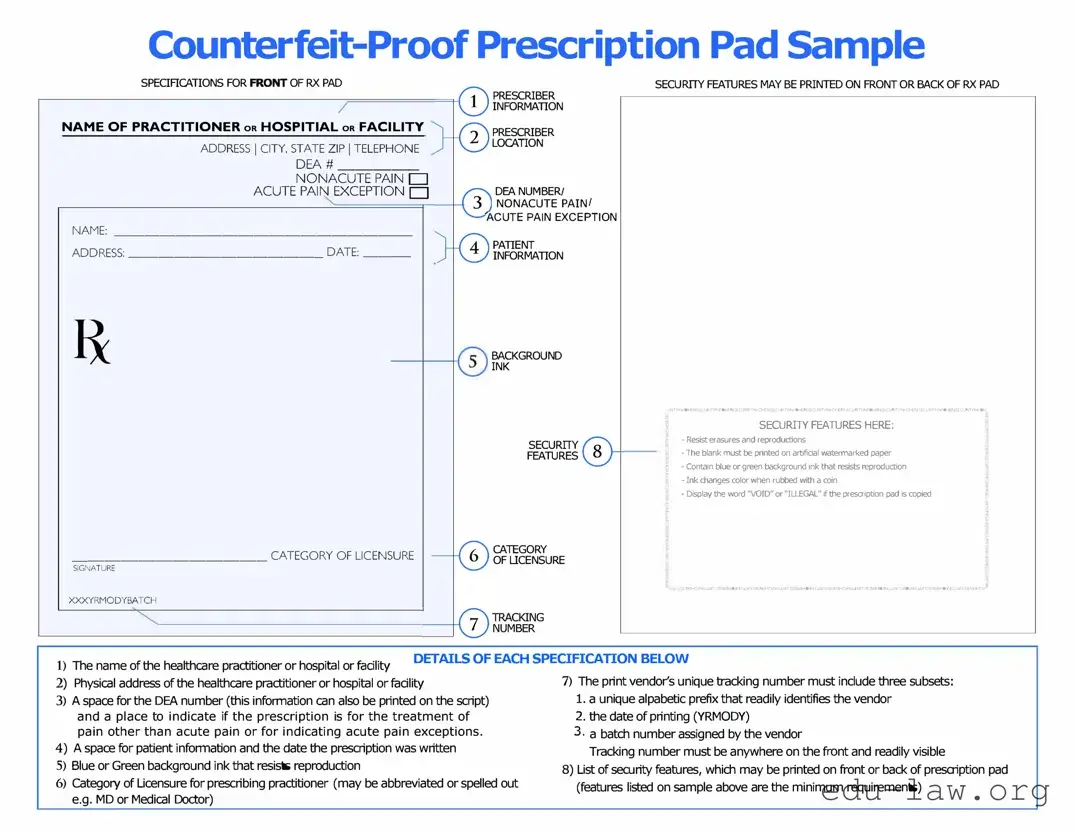What is the Prescription Pad form?
The Prescription Pad form is a document used by healthcare providers to prescribe medications to patients. It helps ensure that prescriptions are clear and standardized, which can reduce errors and improve patient safety.
Who can use the Prescription Pad form?
Any licensed healthcare provider, such as a doctor, nurse practitioner, or physician assistant, can use the Prescription Pad form. The form must be completed according to state regulations to be valid.
What information is required on the Prescription Pad form?
Essential details include the patient's name, date of birth, and address. The medication's name, dosage, instructions for use, and the provider's signature are also necessary. Additional information, like the patient's allergies and current medications, can enhance safety.
Is the Prescription Pad form legally binding?
Yes, when completed correctly, the Prescription Pad form functions as a legal document. Pharmacists and healthcare providers rely on it to dispense medication. If the form is incomplete or contains errors, it may not be honored.
Can a patient obtain a Prescription Pad form?
Typically, patients do not obtain Prescription Pad forms directly. Instead, healthcare providers complete and issue them during a consultation. If you have questions about a prescription, contacting your healthcare provider is the best course of action.
Are there different types of Prescription Pad forms?
Yes, different forms exist for different types of medications. Some states have specific forms for controlled substances, which require additional information or security features to prevent misuse.
How can I ensure my Prescription Pad form is filled out correctly?
To ensure accuracy, providers should follow best practices. Double-check the patient’s information, verify the medication details, and ensure the signature is clear. Additionally, using standardized templates can help reduce errors.
What should I do if there is an error on my prescription?
If you notice an error on your prescription, contact your healthcare provider immediately. They can issue a corrected prescription to ensure you receive the right medication without any complications.
Can prescriptions be sent electronically instead of using a physical Prescription Pad form?
Many healthcare providers now use electronic prescriptions, which are increasingly accepted by pharmacies. Electronic prescriptions can offer convenience and increase the accuracy of medication orders, minimizing errors.
What steps are taken to prevent prescription fraud?
To prevent fraud, several measures can be implemented. These can include using tamper-resistant prescription pads, issuing electronic prescriptions, and regularly monitoring prescription patterns for anomalies. Healthcare providers are encouraged to stay informed about the best practices to combat prescription fraud.

